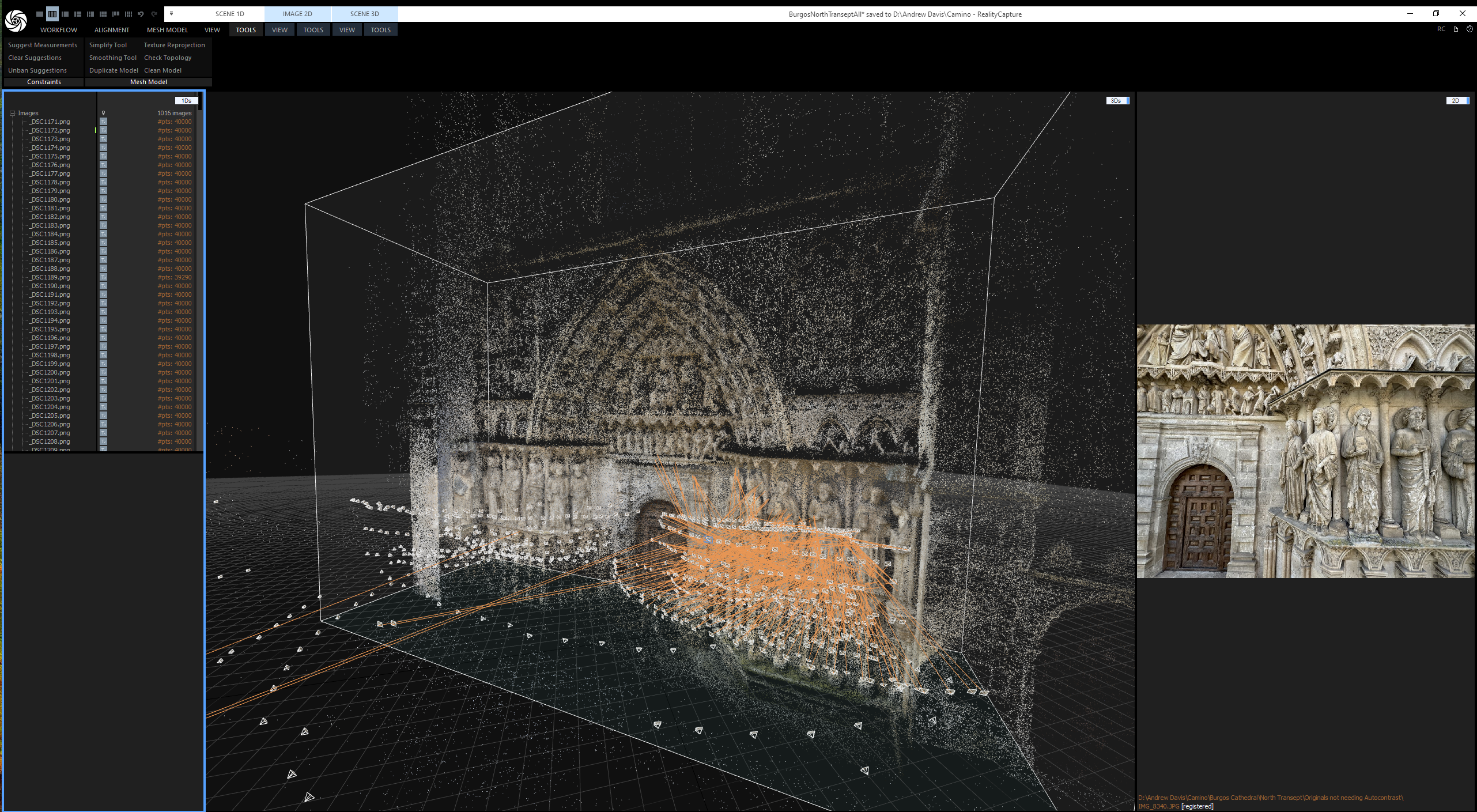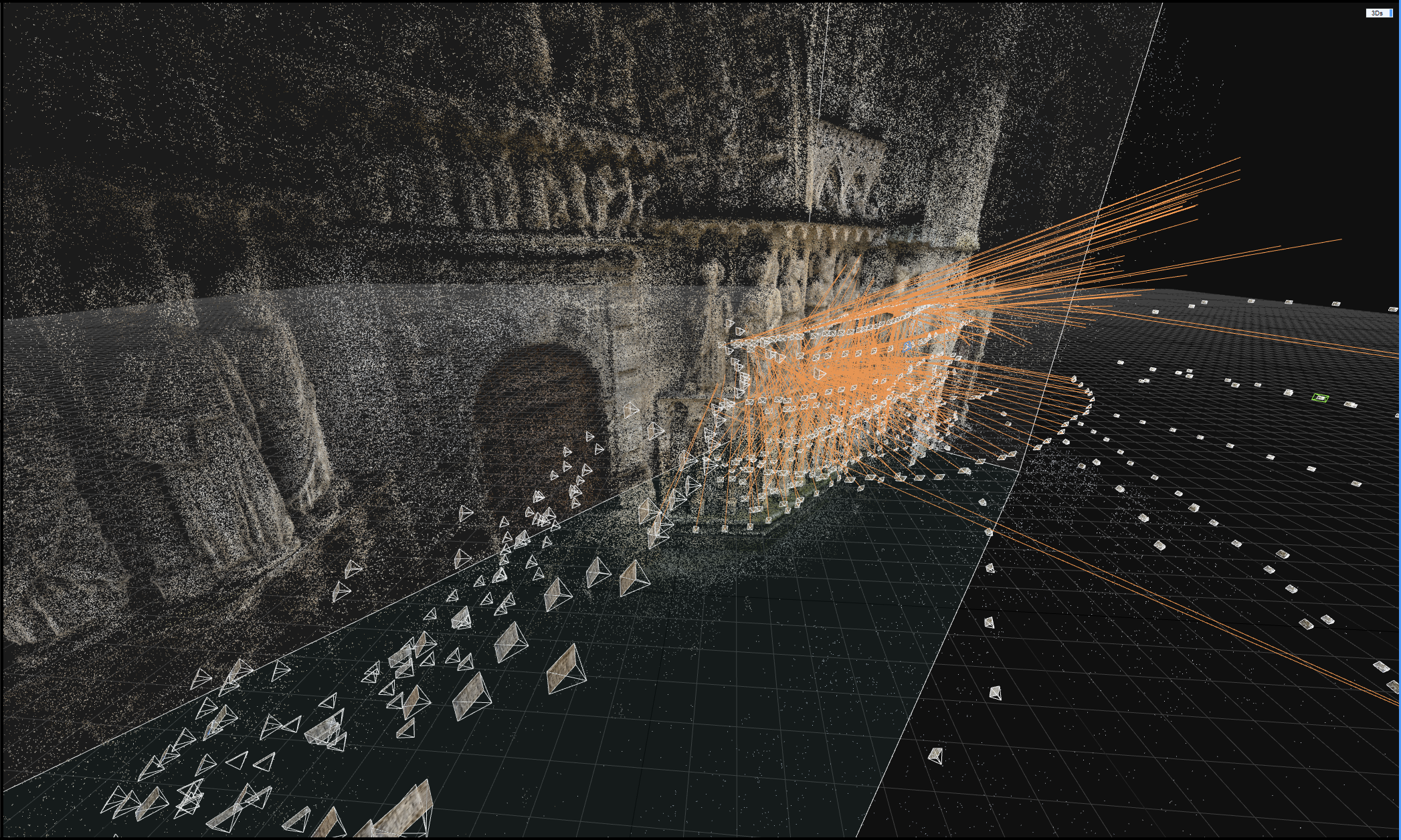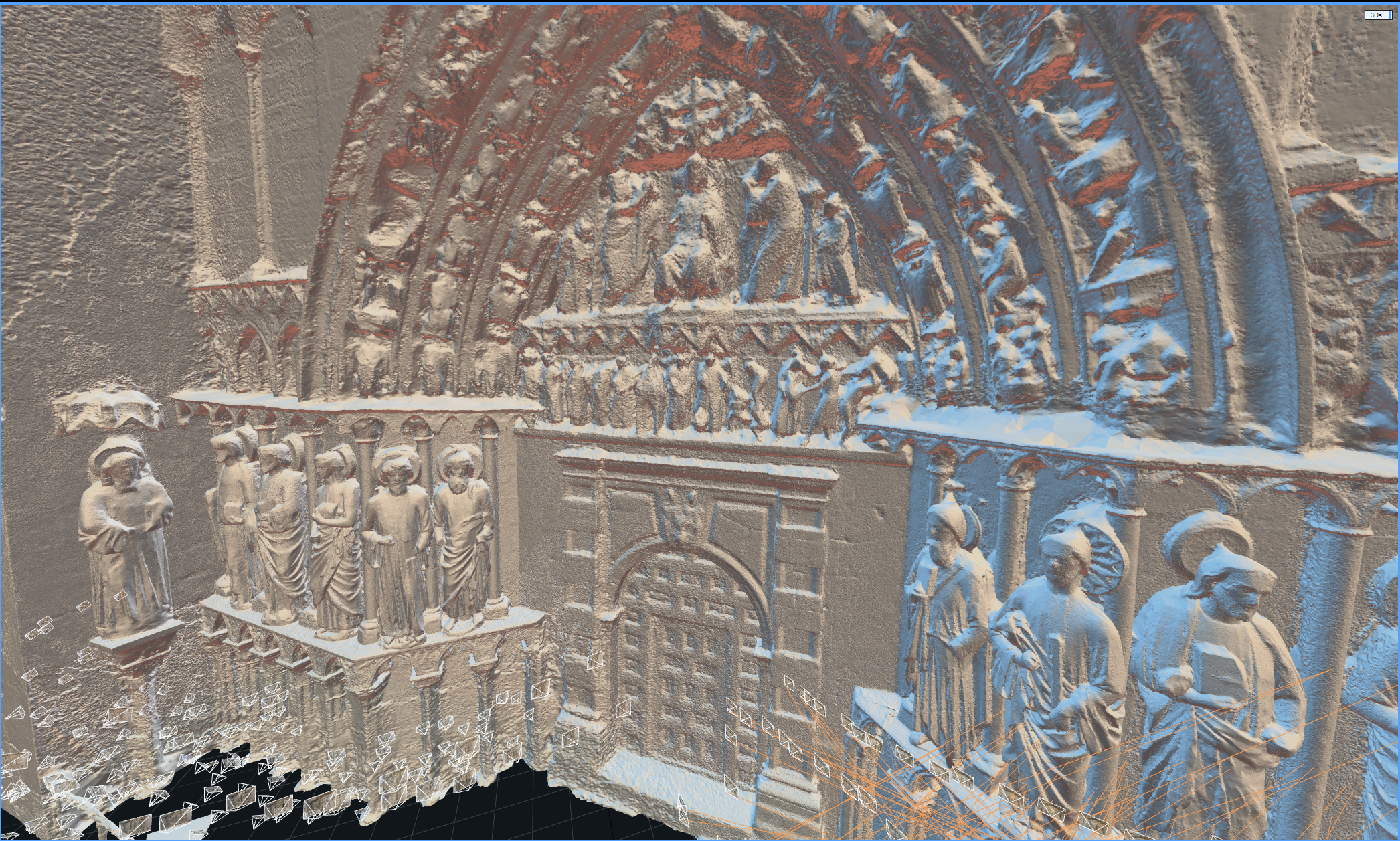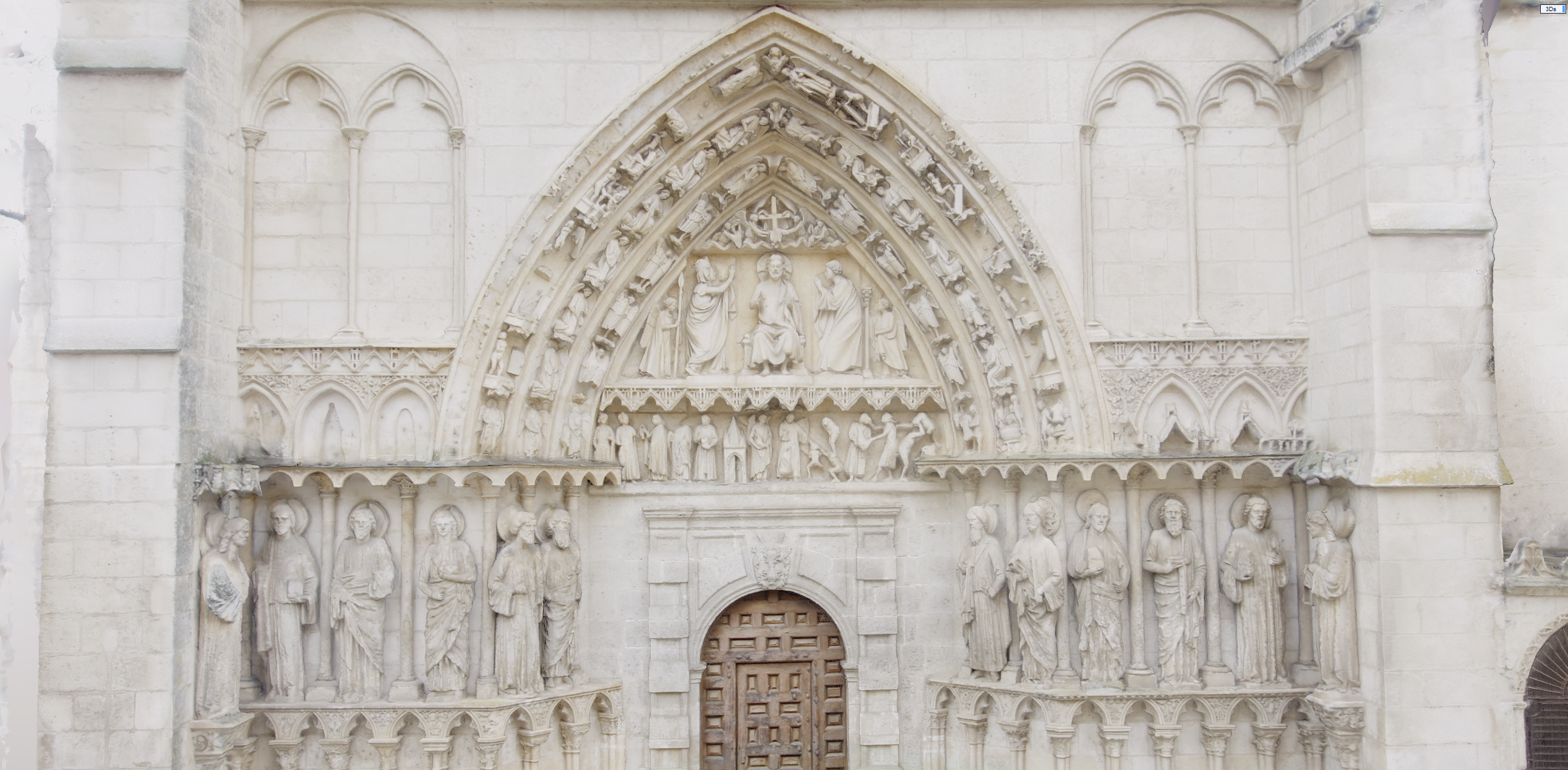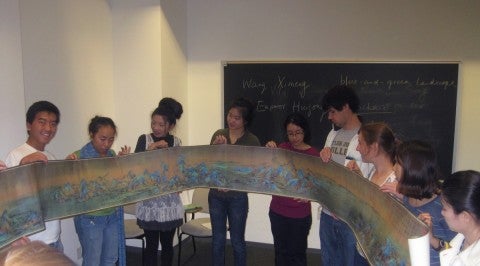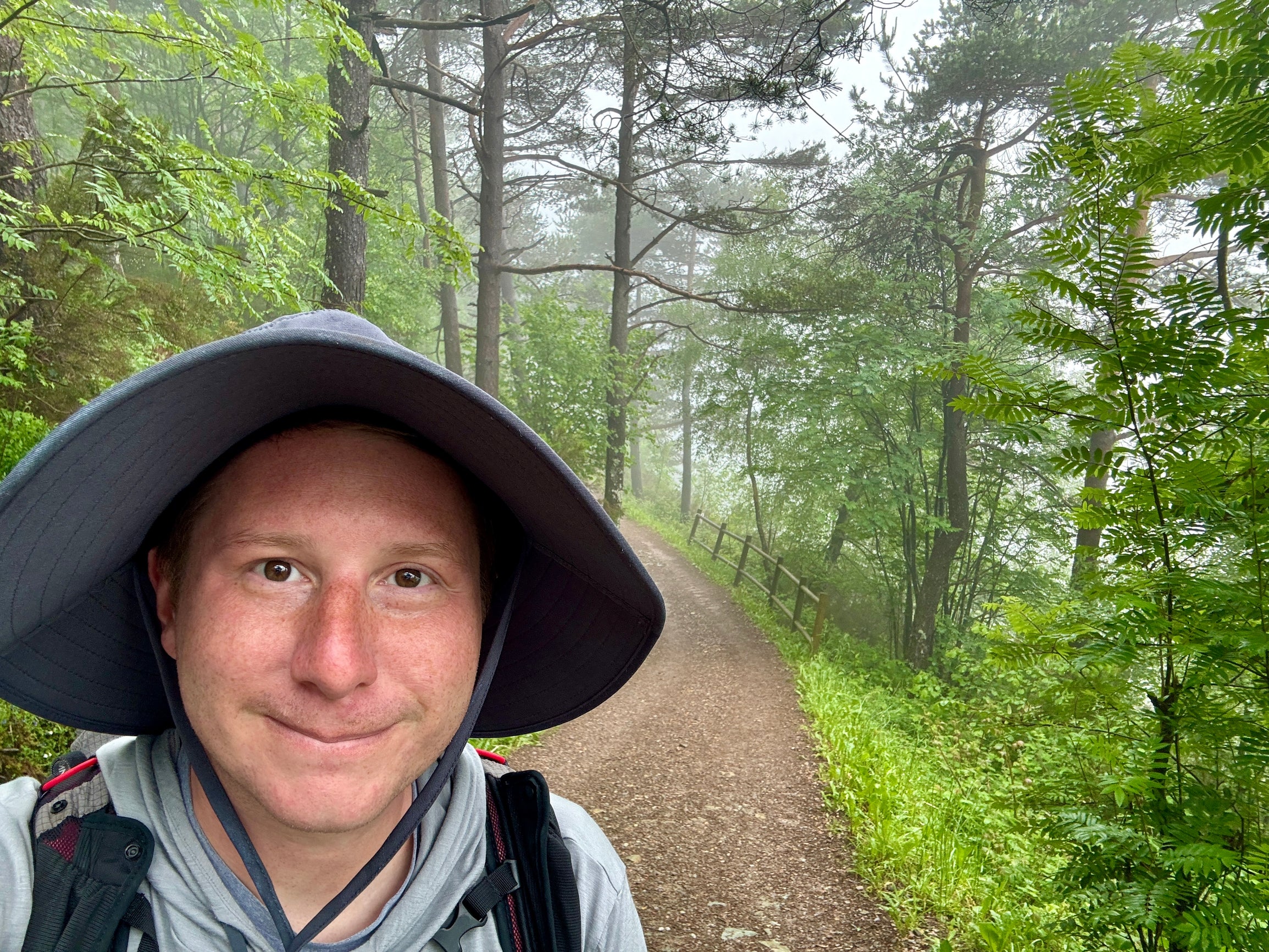Within a few months of receiving notice that he was promoted to Associate Professor of Art History at Winthrop University, Dr. Kyle G. Sweeney departed South Carolina for France, where he launched his largest research project to date. Capturing the Camino: Simulation and Immersion through Virtual Reality (Instagram @capturing.the.camino) is an interdisciplinary research project that aims to produce digital 3D models of historically significant examples of medieval art and architecture located along the 500-mile-long pilgrimage route through Spain known as the Camino de Santiago.
The project, which was funded by the Southeastern Medieval Association and Winthrop’s Research Council, has roots in a course titled “Visual Culture of Medieval Pilgrimage,” which Sweeney took while a graduate student at Rice. “The theme of the course was exciting,” Sweeney recalls, “but the 10-day hike our class completed along the medieval pilgrimage trail we had studied all semester was especially eye opening.” Sweeney saw an opportunity to incorporate digital visualization tools and technologies into the study of medieval art and architecture along the Camino de Santiago and partnered with a colleague to collect data and construct photogrammetry models.
Sweeney and his colleague hiked the 500-mile trail in May and June 2024, logging about 12 miles per day on average. Along the way, they collected over 50 gigabytes of digital photos and videos needed to create 3D virtual models of 30+ key medieval monuments and sculptures they encountered on the Camino. Sweeney reflected that walking each day “changes one’s sense of time” and makes encounters with sacred spaces feel “earned.” “You don’t necessarily realize it, but your psychological state begins to change the farther you walk,” Sweeney recalled, when he described how attending the Pilgrims Mass at the Romanesque Cathedral of Santiago de Compostela moved him to tears. Sweeney went on to say that the virtual models capture the spatial configuration of sculptural elements on medieval churches, allowing for close investigation of their relationships and meaning. He hopes the virtual models he and his students will create will not only make medieval art and architecture more accessible to new generations, but will serve as a model for combining traditional approaches to art historical inquiry with spatial/digital methods. “I can already see the potential to transform teaching and learning,” Sweeney noted. He will offer a seminar on medieval pilgrimage at Winthrop next semester that will combine the study of art history with visualization technologies.
Dr. Sweeney received his Ph.D. from Rice’s Department of Art History in 2017 with his dissertation titled “Notre-Dame de Louviers: Architecture and Urban Identity in Late Medieval Normandy” under the direction of Prof. Linda Elaine Neagley.
